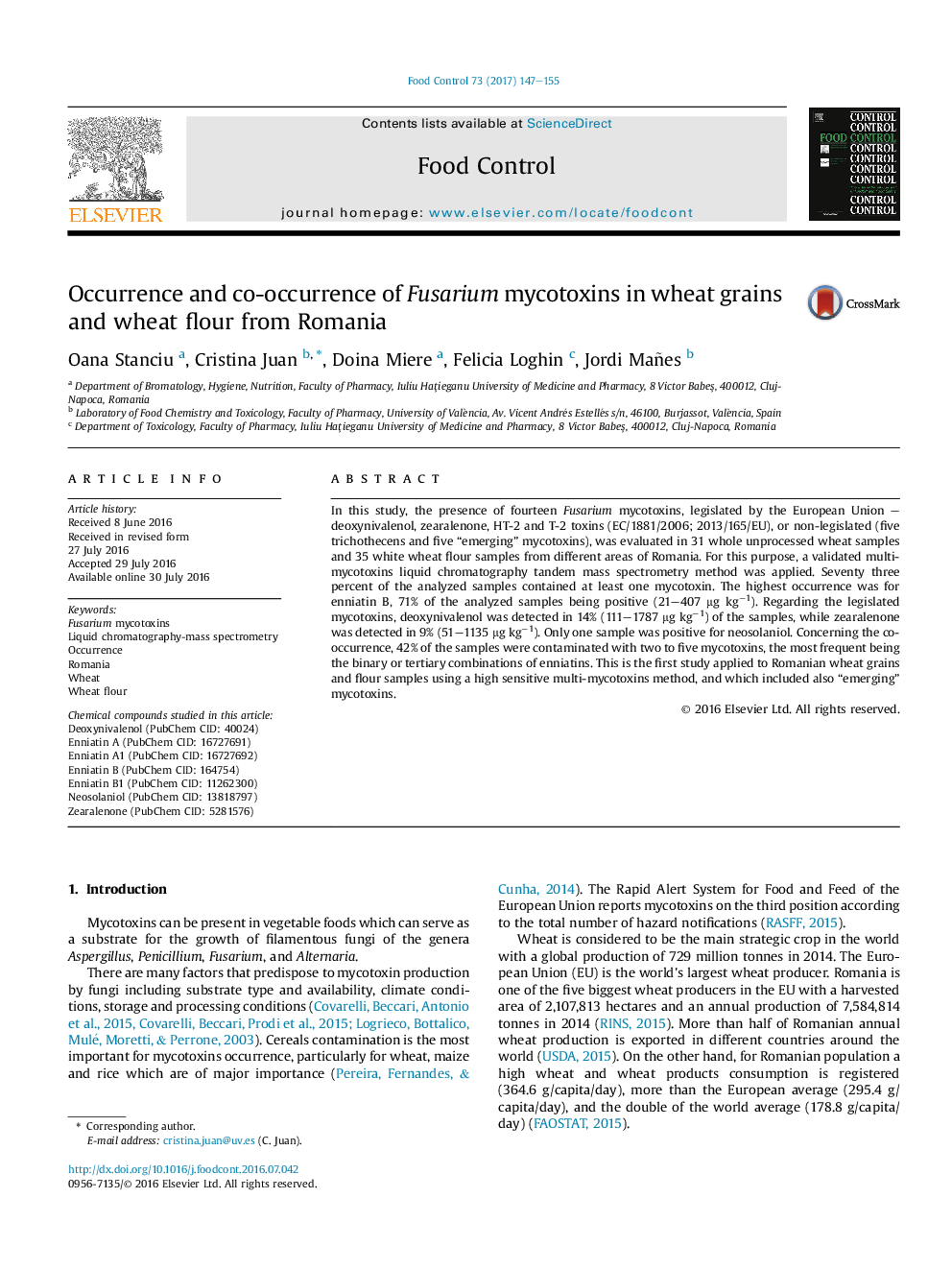| Article ID | Journal | Published Year | Pages | File Type |
|---|---|---|---|---|
| 5767625 | Food Control | 2017 | 9 Pages |
â¢Romanian wheat and flour samples were investigated for 14 Fusarium mycotoxins.â¢White wheat flour was less contaminated than whole unprocessed wheat.â¢Enniatins were the most frequent mycotoxins in both wheat and flour samples.â¢Simultaneous presence of two to five mycotoxins was found for the analyzed samples.â¢Regional differences were observed, correlated with the climatic conditions.
In this study, the presence of fourteen Fusarium mycotoxins, legislated by the European Union - deoxynivalenol, zearalenone, HT-2 and T-2 toxins (EC/1881/2006; 2013/165/EU), or non-legislated (five trichothecens and five “emerging” mycotoxins), was evaluated in 31 whole unprocessed wheat samples and 35 white wheat flour samples from different areas of Romania. For this purpose, a validated multi-mycotoxins liquid chromatography tandem mass spectrometry method was applied. Seventy three percent of the analyzed samples contained at least one mycotoxin. The highest occurrence was for enniatin B, 71% of the analyzed samples being positive (21-407 μg kgâ1). Regarding the legislated mycotoxins, deoxynivalenol was detected in 14% (111-1787 μg kgâ1) of the samples, while zearalenone was detected in 9% (51-1135 μg kgâ1). Only one sample was positive for neosolaniol. Concerning the co-occurrence, 42% of the samples were contaminated with two to five mycotoxins, the most frequent being the binary or tertiary combinations of enniatins. This is the first study applied to Romanian wheat grains and flour samples using a high sensitive multi-mycotoxins method, and which included also “emerging” mycotoxins.
